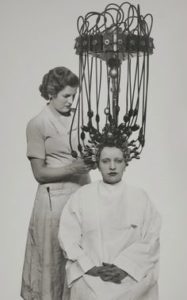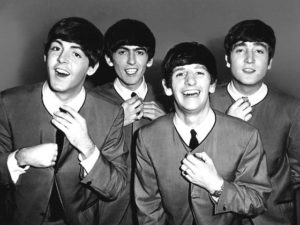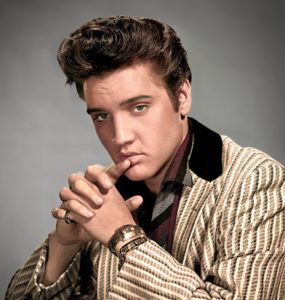
Continua la collaborazione tra il liceo linguistico "Cattaneo dall'Aglio" e Redacon tramite la rubrica "Speakeasy" curata direttamente dagli studenti, dell'anno scolastico 2019-2020.
----
Hi everyone! Today we’d like to talk about a lighter topic than those we’re used to reading every day: hairstyles. Encouraged by our passion for this theme, we have drawn up for you an analysis on the transformations that haircuts experienced during the XX century from decade to decade.
During the XX century, people witnessed great transformations in fashion, due to technological innovations. Furthermore, it was in these years that people began to copy the film stars’ clothing, style and hairstyles, forgetting the princes and the nobles of the aristocracy.

In 1950, German Karl Nessler invented the permanent wave technique, which would represent a real revolution in the context of hair beauty. This long process, which lasted 6 hours, consisted of a cylinders group in which hair was wrapped and curled and which was connected to a warming machine.
Over the years ‘20s and ‘30s permanent machines were improved and the first hairdryer was invented. However, it had some disadvantages: it was very heavy and it needed a long time to dry hair, since it worked on only 100 watt.
After the first World War, men stopped wearing mustache, preferring short and shaved-on-the-sides hair but a little longer on the head top. This style is known as “flat-top”.
Also women used to wear shorter hair, this chance gave them a new image that emancipated them from old social structures and made them more active and more independent.
This haircut, which usually gets between or just below the tips of the ears, caught on as “bob style”.
After the world crisis in 1929, women hairstyles became more natural. The hair was worn long till the neck and for the first time the platinum blonde dye became popular, like that of actress Jean Harlow.

The 1940s and 1950s were characterized by a sense of rebellion towards the previous stylistic canons. This new trend, marked by more natural looks, was spread by bands, like the Beatles.
In 1955, the most imitated actress was definitely Gina Lollobrigida, thanks to the success obtained by the film “ La donna più bella del mondo”.
In the early ‘60s the style of Elvis Presley became popular among young people, which was distinguished by sideburns and high bulky tufts. At this time, television became more and more popular, launching a new style which was more cool and informal, with hair intentionally disheveled, both amongst men and women.
During the cultural revolution, this style was taken up by the hippy movement. Instead, during the course of youth protests, all hairstyles were accepted, but the most popular was the 'afro' one.

In the following decade, there were further changes to establish a clear distance with the years that had just passed. In fact, both men and women wore long hair. Men preferred the style with sideburns and a slovenly beard, whereas women continued to use the permanent wave. An important celebrity of this period was Bob Marley, who influenced the fashion of the time with his rastas, and still does today.
During the ‘80s a new stylistic trend began, called “yuppie” (young urban professional), it was widespread among young boys who worked in Wall Street and who loved a refined and elegant style. Quite the opposite with women who flaunted flyaway hair, nearly always treated with gel or mousse. Trend dyes were in unusual colours, such as blue or bright red. At the same time, fashions like punk and skinhead spread in cities.
Although unisex styles had already existed for many years, in the ‘90s they became more popular. Nirvana leader Kurt Cobain, promoted the grunge trend. It was characterized by stringy and messy hair, as if it was dirty.

Women, inspired by the heroin-chic tendency, preferred long, straight and simple hair. Men again cut their hair shorter on the sides of the head and longer and spiky on the top.
Never as in the ‘90s were hair dyes fashionable. A trend of the time was to dye hair with light shades, leaving few centimetres of visible regrowth.
Nowadays, hairstyles aren’t restricted to trends, indeed everybody's free to express themselves with a hairdo.
Sofia Colombo, Carlotta Musiari e Chiara Marotta
****
Acconciature nel corso del XX secolo
Ciao a tutti! Oggi vorremmo parlare di un tema più leggero rispetto a quelli che siamo abituati a leggere ogni giorno: le acconciature. Spinte dalla passione per questo argomento, vi proponiamo un’analisi delle trasformazioni che hanno subito le pettinature nel corso del XX secolo di decennio in decennio.
Durante il XX secolo, si assiste a grandi trasformazioni nel mondo della moda, dovute a innovazioni tecnologiche. Inoltre, è in questi anni che si iniziano a copiare abbigliamento, stile e acconciature delle dive del cinema, dimenticando quelli propri dei principi e dei nobili dell’aristocrazia. Nel 1905, il tedesco Karl Nessler inventa la tecnica della permanente, che rappresenterà una vera e propria rivoluzione nell’ambito della bellezza dei capelli. Questo lungo sistema, della durata di 6 ore, consisteva in un gruppo di cilindri in cui i capelli erano avvolti e arricciati, collegati a una macchina che si riscaldava.

Durante gli anni ‘20 e ‘30 le macchine per la permanente vengono migliorate e viene inventato il primo asciugacapelli. Esso presentava però alcuni svantaggi: era molto pesante ed essendo in grado di utilizzare solo 100 watt, l’asciugatura richiedeva molto tempo.
Dopo la prima Guerra Mondiale gli uomini smettono di portare i baffi, preferendo i capelli corti, rasati ai lati e poco più lunghi nella parte superiore della testa. Questo stile è conosciuto come “Flat-top”.
Anche le donne portano i capelli più corti, questa novità dona loro una nuova immagine che le libera dalle vecchie strutture sociali e le rende più attive e indipendenti. Questo taglio, che non supera l’altezza delle orecchie, si diffonde con il nome “Bob style”.
Dopo la crisi mondiale del 1929, le acconciature delle donne diventano più naturali. I capelli si portano lunghi fino al collo e per la prima volta si diffonde la tinta biondo platino, come quella dell’attrice Jean Harlow.
Gli anni 1940 e 1950 sono caratterizzati da un senso di ribellione verso i canoni stilistici precedenti. Questa nuova tendenza, caratterizzata da look più naturali, viene diffusa da gruppi musicali emergenti, come i Beatles.
Nel 1955, l’attrice più imitata è sicuramente Gina Lollobrigida, grazie al successo ottenuto dal film “La donna più bella del mondo”.

Agli inizi degli anni ‘60 si diffonde tra i giovani lo stile di Elvis Presley, contraddistinto da basette e alti ciuffi voluminosi. In questo periodo la televisione comincia ad essere popolare, lanciando un nuovo stile più fresco ed informale, con capelli intenzionalmente spettinati, sia tra gli uomini che tra le donne.Durante la rivoluzione culturale, questo stile viene ripreso dalla corrente hippy. Nel corso della protesta giovanile, invece, tutte le acconciature erano accettate, ma la principale era quella afro.

Nel decennio seguente, si presentano ulteriori cambiamenti per stabilire una netta distanza con gli anni appena passati. Infatti, sia uomini che donne portano capelli lunghi. Gli uomini preferiscono lo stile con basette e barba incolta, mentre le donne continuano ad usare la permanente.
Un importante personaggio di questo periodo è Bob Marley, che con i suoi rasta influenza la moda di allora e quella odierna.
Durante gli anni ‘80 inizia una nuova tendenza stilistica, ovvero lo stile yuppie (young urban professional), diffusa tra i giovani che lavorano a Wall Street e che amano uno stile raffinato ed elegante. Al contrario, le donne sfoggiano capelli vaporosi, quasi sempre curati con gel o mousse. Le tinture di tendenza sono di colori insoliti, come il blu o il rosso brillante. Contemporaneamente nelle città si diffondono mode come punk e skinhead.
Nonostante gli stili unisex esistessero già da parecchi anni, negli anni ‘90 hanno una maggiore diffusione. Il leader del gruppo Nirvana, Kurt Cobain, promuove la moda grunge. Essa è caratterizzata da capelli lasciati fibrosi e disordinati, come fossero sporchi.
Le donne, ispirate dalla corrente heroin-chic, preferiscono capelli lunghi,lisci e semplici.
Gli uomini ricominciano a tagliarsi i capelli più corti ai lati della testa e più lunghi a spazzola in alto. Mai come negli anni ‘90 vengono utilizzate colorazioni per capelli. Una tendenza del periodo è tingere i capelli di colori chiari, lasciando qualche centimetro di ricrescita visibile.
Oggi, le acconciature non sono vincolate alle mode, infatti ogni individuo è libero di esprimere la propria personalità attraverso la capigliatura.
Sofia Colombo, Carlotta Musiari e Chiara Marotta








Brave ragazze!
D.C.